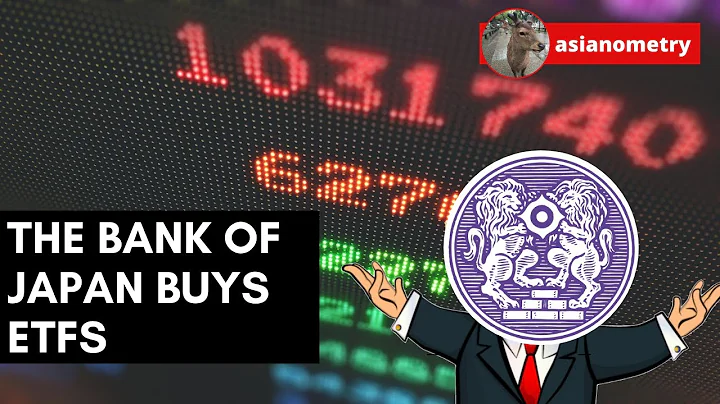After both performance and stock price were cut in half, the crisis of Gansu Bank continues to ferment.
html On April 5, Bank of Gansu had a run on its branches in some counties. The next day, some county governments, the central bank and the China Banking and Insurance Regulatory Commission jointly issued a stability maintenance announcement. Gansu Bank also announced that it had sufficient funds. The drop in stock prices was a market behavior and did not affect depositors' deposits. All operations are currently normal.Prior to April 1st, Gansu Bank , which had always been "calm", staged a shocking performance at 2:30 in the afternoon, and became a "penny stock" in one day. In the evening of the same day, the company responded that the plunge was due to the forced liquidation of some shareholders' pledged stocks.
Shareholders liquidated their positions and became "immortals" in one day
html On the evening of March 30, "Northwest Bank's first share" Gansu Bank released its 2019 financial report, and the stock price fell 11.54% the next day.But the real nightmare came on April Fool's Day - at 2:30 in the afternoon, Gansu Bank plummeted all the way, falling nearly 50% in less than an hour, and finally closed down 43.48%. The stock price reported 0.65 Hong Kong dollars, becoming a penny stock.
In the evening of the same day, Gansu Bank responded to the stock price crash and said that certain shareholders pledged their Gansu Bank H shares to a number of financial institutions for financing. In order to fulfill their obligations under relevant financing arrangements, these shareholders have pledged Bank of Gansu H shares were forced to sell, which in turn led to large fluctuations in the stock price and trading volume of Bank of Gansu H shares on April 1.
Judging from the after-hours data, the trading volume of Gansu Bank on that day was close to 1.22 million lots, with a turnover of more than 80 million Hong Kong dollars. The data on the previous trading day was only 18,500 lots and 2.2 million Hong Kong dollars. From the 2nd to the 3rd, the trading volume of Gansu Bank continued to increase.
As can be seen from the equity structure chart of Tianyan, Gansu Bank is controlled by the Gansu State-owned Assets Supervision and Administration Commission. The top four shareholders are Gansu Highway and Aviation Tourism Investment Group (11.49%), Baoshang Bank (8.39%), and Jiuquan Iron and Steel (6.3%). Judging from the shareholdings of financial institutions, CITIC Securities and Guotai Junan are among the important shareholders, and both have made significant moves to reduce their holdings recently.

Judging from the data disclosed by Gansu Bank on April 6, on the day of the flash crash on April 1, CITIC Securities reduced its holdings of Gansu Bank 49.031 million shares in total, accounting for nearly 50% of the day's trading volume, and the turnover was approximately is HK$32 million.
However, there is news that the person who was liquidated that day was a shareholder of Gansu Bank in Shenzhen, involving a pledge of 100 million shares. The financial industry's "Financial Eyes" noticed that among the important shareholders of Gansu Bank , only ECCOM International and China Science and Technology Capital are located in Shenzhen. As cornerstone investors of listed banks, the current situation of both of them is not optimistic. The stock price crash caused by
's liquidation may have also caused other shareholders to passively reduce their holdings. In addition to CITIC Securities , from April 2 to 3, Guotai Junan successively reduced its holdings of 89.5830 and 92.00 million shares, with a rough calculation of the transaction amount of approximately HK$127 million. After the reduction, the proportion of shares held by CITIC Securities and Guotai Junan in Gansu Bank dropped to 5.99% and 3.94% respectively.
As of the close of trading on April 7, the market value of Gansu Bank was only HK$6.847 billion, a decrease of more than HK$20 billion from the initial listing.
Chain reaction: runs and maintaining stability
Panic quickly spread to the storage business. On April 5, Gansu Bank experienced cash runs in some small counties, with a large number of residents queuing up to withdraw money despite the epidemic.
 html On April 6, Gansu Bank issued an announcement stating that the drop in stock prices on April 1 was market behavior and did not affect depositors' deposits. At present, Gansu Bank is operating normally and has sufficient cash.
html On April 6, Gansu Bank issued an announcement stating that the drop in stock prices on April 1 was market behavior and did not affect depositors' deposits. At present, Gansu Bank is operating normally and has sufficient cash. On the same day, the Longnan Branch of the Central Bank, the Longnan Supervision Branch of the China Banking and Insurance Regulatory Commission and the Huixian People's Government jointly issued an endorsement, saying Bank of Gansu is a state-owned commercial bank managed by the Gansu Provincial Government and is the largest provincial financial institution in Gansu Province. With strong strength, we remind all depositors not to believe or spread rumors, and not to blindly withdraw their deposits intensively during the critical period of epidemic prevention and control.

The crisis of Gansu Bank may not stop there.Its latest financial report shows that it achieved operating income of 7.233 billion yuan last year, a year-on-year decrease of 18.5%, and the profit attributable to shareholders was 509 million yuan, a sharp drop of 85.2% year-on-year.
In addition, multiple sets of data have released signals that Gansu Bank asset quality has declined. In 2019, Gansu Bank non-performing loan ratio reached 2.45%, a new high in the past five years, far exceeding the average level of commercial banks (1.86%). During the same period, the bank's provision coverage ratio hit a new low in the past five years, only 135%. .
Throughout last year, Gansu Bank asset impairment losses surged from 1.9 billion yuan in 2018 to 4.3 billion yuan.
The tragic situation of small and medium-sized banks in the Hong Kong stock market
Affected by the differences in listing thresholds in Hong Kong, many small and medium-sized mainland banks have chosen to list on the Hong Kong Stock Exchange. The most recent ones are Jinshang Bank, Bank of Guizhou, Bank of Jiujiang, and Bank of Luzhou, which listed on the Hong Kong Stock Exchange in the second half of last year. Then it entered the Hong Kong stock market after listing Gansu Bank (January 2018).
However, judging from market performance, most of the banking sectors in the Hong Kong stock market have small trading volumes and inactive transactions. Against the background of slowing global economic growth and increasing uncertainty, they are also facing fundamental difficulties such as deteriorating asset quality and weakening profitability.
Judging from the recent performance disclosures of various listed banks in the Hong Kong stock market, nearly half of the banks have experienced an increase in non-performing ratios in 2019. For example, Jinzhou Bank's non-performing ratio is as high as 6.52%, an increase of 1.53 percentage points from 4.99% at the end of 2018.
Under the impact of the epidemic, rising pressure on credit risks has increased, and small and medium-sized banks that are relatively weak in resisting economic downturns and credit risks are facing new challenges. On April 3, the People's Bank of China decided to lower the deposit reserve ratio by 1pc for small and medium-sized banks, releasing 400 billion in liquidity. It also stated that the 1 trillion small and medium-sized banks' re-loan and rediscount quota can be used after the previous 500 billion quota is used up. Specifically, The policy will be released soon.
Zheshang Securities analysis said that as the main force in serving small, medium and micro enterprises, loan risk sharing policies are currently being introduced one after another, which is conducive to mitigating bank credit risks.





















